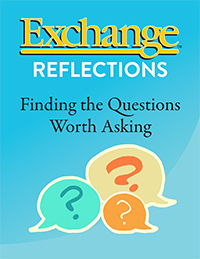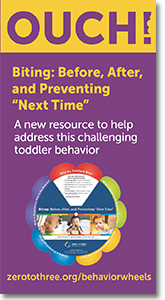ExchangeEveryDay Past Issues
 << Previous Issue
| View Past Issues | | Next Issue >>
<< Previous Issue
| View Past Issues | | Next Issue >> -Maya Angelou
“If I were to put you into an fMRI scanner—a huge donut-shaped magnet that can take a video of the neural changes in your brain—and flash the word 'NO' for less than one second, you’d see a sudden release of dozens of stress-producing hormones and neurotransmitters. These chemicals immediately interrupt the normal functioning of your brain, impairing logic, reason, language processing, and communication,” wrote Andrew Newberg, M.D. and Mark Waldman in their article in Psychology Today. They explain that everyone – adult and child alike – would benefit from moving from a “no” to a “yes” orientation to life.
In her article, “A YES Environment: Promoting Positivity in Your Classroom,” Kaila Weingarten writes:
“Everyone needs a YES environment to do their best. A YES environment is a safe, positive place that encourages personal growth by allowing the freedom of reasonable risk taking. For children, this means a place:
- that is secure and childproof, so safety concerns do not hinder children’s independence;
- where they can independently learn and explore;
- where predictable, yet flexible, routines and schedules contribute to a warm, caring environment;
- equipped with toys, supplies, and activities that are developmentally appropriate and readily available;
- where no centers are off limits or ‘closed’ for the day;
- where items not intended for children are placed out of reach;
- where the word "no" is used in moderation; therefore, children are more likely to listen when it is said.”
The newest in the Exchange Reflections series, “YES Environments,” uses Weingarten’s article as a discussion starter for staffs, college students or individual educators, encouraging them to ponder when they are comfortable saying “yes,” and when they believe “no” is still necessary. Discussion questions and commitment suggestions center around ideas that could help programs move to a more “YES” focused philosophy.
Source: “Why This Word is So Dangerous to Say or Hear,” by Andrew Newberg, M.D. and Mark Waldman, Psychology Today, August 1, 2012
 |





Comments (4)
Displaying All 4 CommentsDimensions
Eugene, OR, United States
Susan, thanks for pointing that out. We'll send you and others a corrected version as soon as possible!
Linda, good point! It may be especially important to think of how to create YES environments with so many new restrictions for both children and adults to adjust to. Perhaps we can 'crowd source' our thinking on this and share ideas, as spaces, schedules, materials, care routines, meals and just about everything is impacted.
Frances, good point - maybe it's all in how we each find that balance between predictability and flexibility, often on a 'case-by-case' basis. I have two, now-grown, boys whose needs for flexibility and predictability were quite opposite of each other!
Alameda Family Services
Alameda, California, United States
The last paragraph on page 3 contains the following:
not a ing (SOMETHING IS MISSING HERE:CW)
I'd appreciate knowing what would be correct in its place. I also suggest you correct it for subsequent buyers.
Community Nursery School
Dobbs Ferry, NY, United States
While at any other time I would be sharing this once again with enthusiasm I thought this was an interesting choice of article as we are trying to reopen schools in the midst of a pandemic where social distancing is incredibly hard for preschoolers sharing is limited and certain materials prohibited. We are always looking for an alternative to NO as we wrestle with the restrictions in place for the safety and health of our staff and children
CSBC
Denver, CO. , CO, United States
I think this is great advice, especially with certain children who always seem to get the brunt of negative teacher interactions. But I take issue with the item, "Where predictable yet flexible routines and schedules contribute to a warm, caring envirornrnent". We in the early childhood field place far too much importance on predictable schedules! Its much more important that chidlren are simulated, assisted in structuring their own learning, and not bored. Boredom always leads to negative behaviors - often by those chidlren who are at the negative end of teachers' interactions.
Post a Comment